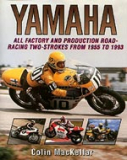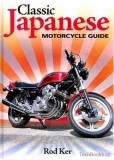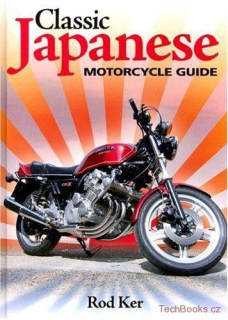Anotace
| Vazba: | Brožovaná | ||
| Počet stran: | 136 | ||
| Rozměry v mm: | 210 x 280 | ||
| Počet obrázků: | 250 | ||
| Rok vydání: | 2001 | ||
Cast your mind back to the 1960sm the Beatles were top of the pops, BSA, Norton and Triumph were ‘kings of the road’ and the Japanese were only famous for tiddlers, two-strokes and cameras. A big disadvantage when any serious motorcyclist wouldn’t be seen dead on anything other than a big, four-stroke, parallel twin, usually with loud pipes. In fact, several Japanese manufacturers were building bikes in the great British tradition at that time. Cabton, Hosk, Meguro and Kawasaki all had 500cc and 650cc twin-cylinder bikes in their range, but apart from Honda’s 450cc Black Bomber, none of them made any real impact outside of Japan. After all, why would any self-respecting biker waste his money on a copy when he could still buy the real thing? But that situation changed when Yamaha, a company famous for pianos, rapid two-strokes and the engine in James Bond's Toyota 2000 GT sports car, decided that the time was right to build their very first four-stroke motorcycle. The project began in 1967 when the Yamaha engineers took two cylinders of the Toyota car engine, utilised the computer from their musical instrument division to design a brand new crank and cam shaft and shoe-horned the resultant engine into the frame from their 350cc YR-1. Five prototypes later (and a little styling inspiration from Triumph) the 653cc XS-1 was launched at the Tokyo Motor Show in October 1969, and so began the legend of the best British twin that the Japanese ever made. Over a quarter of a million XS650s in 40 different variations were produced before production came to a halt in 1985, including the often under estimated SE model in 1978, (the bike that started the factory custom craze) and a police model that found favour in Iran of all places and was used by the Ayatollah's personal outriders. Sales were slow in Britain, the traditional home of the Big Twin, but just about everywhere else, and especially in America, the bike developed a huge cult following, which in turn created a vast tuning industry dedicated to improving the breed. I have often read misguided remarks about the poor handling and flexible chassis of the XS650, but once Percy Tait got to grips with the geometry in 1975, any steering worries were cured. The heart of the XS though is that unburstable engine, a true motorcycling classic that looks good too. It has propelled umpteen sidecar motocross outfits to success and provided the power for numerous hillclimb machines and drag bikes. It also formed the basis for the famous Yamaha Flat-Trackers that took on (and frequently beat) the Harley-Davidson in its own back year, launching the career of a young Kenny Roberts in the process. This Performance Portfolio is testimony to the popularity of the XS650, which in my humble opinion, is probably the best parallel twin ever made. Its tough, dependable and guaranteed to provide plenty of smiles per mile! The Yamaha XS-650 is a true motorcycling classic that looks good too. 31 articles includes road & comparison tests, history, new model intros, owner survey & engine rebuild.
Models covered: XS-1, XS-1B, XS-2, XS-650, B, C, D, E SE, F, SF & Special. 136 pages including 7 full colour. Approx. 250 b/w illus.

























